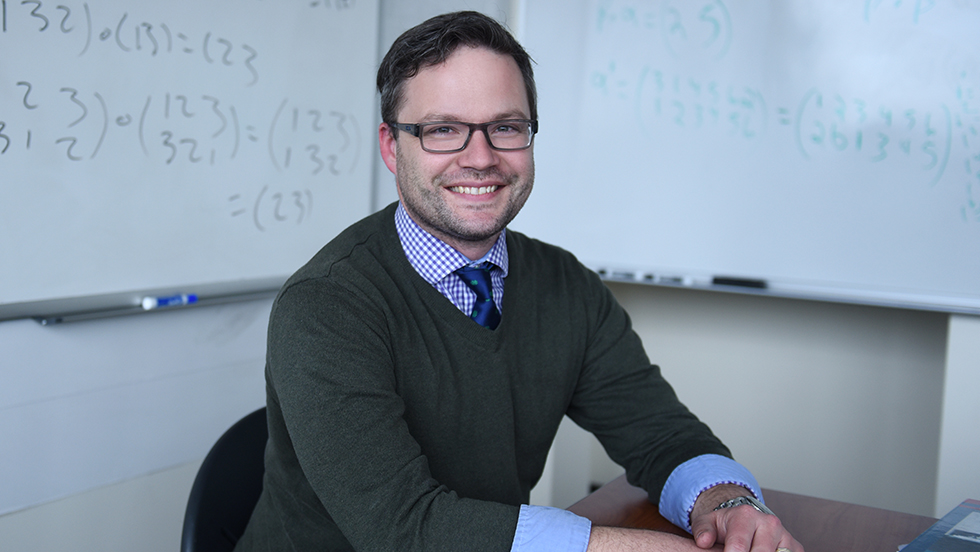
Student-faculty team examines the foundational assumptions of carcinogenesis modeling.
Carcinogenesis—or the formation of cancer through cellular transformation—is a largely undetectable process, which makes tracking its evolution difficult. “We can’t observe cancer’s emergence, so mathematical epidemiologists must model it instead,” according to Joshua Hiller, PhD, assistant professor of mathematics and computer science at Adelphi.
In 1954, researchers Peter Armitage, PhD, and Richard Doll, MD, developed the first widely accepted model of carcinogenesis. “It is still, to a great degree, the foundational model we use today,” said Dr. Hiller. “You start with a healthy cell. Then the cell undergoes some number n discrete irreversible mutations, each with some waiting time. At the end of the series of mutations, you get your first cancerous cell.”
In the years since Drs. Armitage and Doll published their model, however, the mathematical and scientific standards for disease modeling have grown more rigorous. Dr. Hiller wanted to see how well their work had stood the test of time. In collaboration with Gabriella Smokovich ’21, MS ’22; Andrew Velasquez-Berroteran ’22; and Eleni Zamagias ’21, MS ’22, all Adelphi students at the time, he and colleagues at Western Carolina University scrutinized each part of the model, hoping to unpack the logic behind it. “We wanted to know which assumptions were necessary to make the model fit real-world data,” Dr. Hiller said.
Smokovich, Velasquez-Berroteran and Zamagias were responsible for re-proving the proofs in the model. They also conducted historical research and examined the probability of various case scenarios. Eventually, the group identified a surprising result: No stochastic process—a mathematical technique for modeling random events, such as gene mutations—exists that can account for all of the assumptions at the same time. “Only by relaxing the assumptions could we create a stochastic model that fit the data,” Dr. Hiller said. “My students were able to prove original mathematical theorems no one else had proved before. It showed them that they could be successful as applied mathematicians.”
Their findings were published as “An Axiomatic and Contextual Review of the Armitage and Doll Model of Carcinogenesis” in the 2022 edition of Spora: A Journal of Biomathematics.1
The students all agree that they gained invaluable experience. “Completing this research not only allowed me to dive further into a topic that I found interesting, but also helped me learn how to present myself in a professional environment,” said Zamagias.
Smokovich, who now teaches at a high school in Queens, turns to the project for inspiration in her classroom. “When I teach the concepts of statistics, I challenge my own students to choose a question they have interest in and do a basic statistical analysis, as I share my own research journey,” she says. “Our work reminded me that I can do whatever I put my mind to.”
1 Hiller, Josh, and Gabriella Smokovich, Andrew Velasquez-Berroteran, Eleni Zamagias, et al.“An Axiomatic and Contextual Review of the Armitage and Doll Model of Carcinogenesis.” Spora: A Journal of Biomathematics, vol. 8, 2022, pp. 7–15.